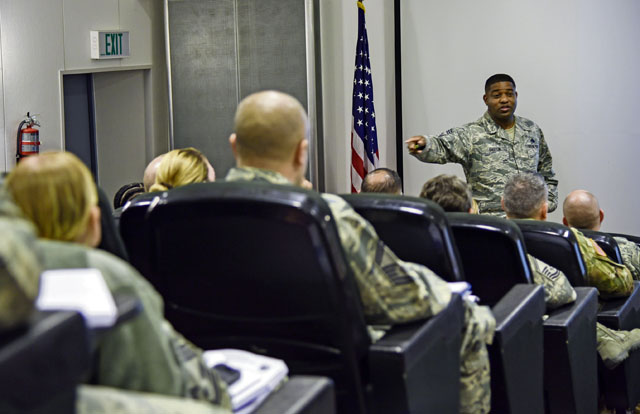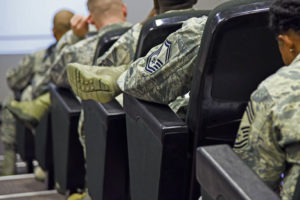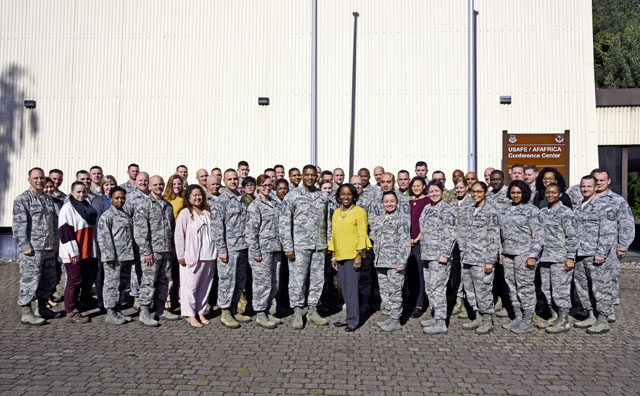
Chief Master Sgt. Phillip L. Easton, U.S. Air Forces in Europe and U.S. Air Forces Africa command chief master sergeant, hosted a five-day USAFE-AFAFRICA Squadron Superintendent and Spouse course, Sept. 24 to 27 at the USAFE Conference Center on Ramstein Air Base.
“Superintendents have always existed in our organization, but now we’re focusing on the Air Force Chief of Staff Gen. David L. Goldfein’s priority of revitalizing squadrons,” said Senior Master Sgt. Robert Ybay, 1st Air Communications Operations Squadron superintendent. “In order to build that bench of leadership within the unit, commanders go through their squadron commander’s course and first sergeants go through their first sergeant academy, but there really wasn’t a deliberate development or training for squadron superintendents.”

Recognizing the need for training, the superintendent and spouse course was created.
“The squadron is the heartbeat of our United States Air Force,” said Easton. “It’s where everything begins and ends; so as we’re going through revitalizing our squadrons, it’s important to make sure that they have the tools to be successful.”
Forty-five superintendents and nine spouses, to include two members from joint services, as well as a coalition partner, attended the course geared toward superintendents who have been in the position less than a year and those who have been vectored toward the job.
“The spouse side of the course was meant to guide, educate, and mentor spouses of selected superintendents,” said Senior Master Sgt. Cornelia Crawford, 86th Operations Support Squadron superintendent. “They were given briefs to educate them on some of the information they might not have been privy to, prior to being in this type of position.”
Conversely, the superintendent side of the course educated attendees on what to expect once they’re in the position along with providing some tools one might need as a squadron superintendent.
Some of the tools the superintendents were briefed on included resource management, manpower, the key spouse program, and leadership perspective.
“How do you revitalize a squadron?,” asked Ybay. “You do it by revitalizing the leaders within that squadron and make sure that they have the tools they need to lead the Airmen.”
During the course, superintendents were able to panel current squadron superintendents, meet with senior mentors, and also network among one another.
“The networking within the course, I find is one of the key pieces,” said Crawford. “The same way you have superintendents who’ve already been in the seat for up to a year, there are some spouses who’ve been key spouses or spouse mentors. So having a course like this allows the opportunity for networking and mentorship.”
Beside the superintendents, the spouses were also able to tour the base dining facility, deployment transition center, Landstuhl Regional Medical Center, United Service Organizations, the Fisher House, and also some of the Airmen’s living quarters.
Crawford added, prior to the tours a lot of the spouses were unaware of the services that were available throughout the KMC. The tours also stand as a way to expose the spouses to our Airmen’s way of life. As a squadron superintendent team, especially from a key spouse side, it is very important to see what Airmen go through daily.
Although the USAFE-AFAFRICA Squadron Superintendent and Spouse course had two separate objectives, the constant theme of the course circled around the aspect of team.
“It’s really one course,” said Ybay. “It’s not solely geared towards superintendents or spouses. It’s about the effort of that superintendent team. There will be late nights, a lot of overtime, and a lot of things that a spouse needs to understand and this course provides that because it’s a team effort going forward as a squadron superintendent.”



